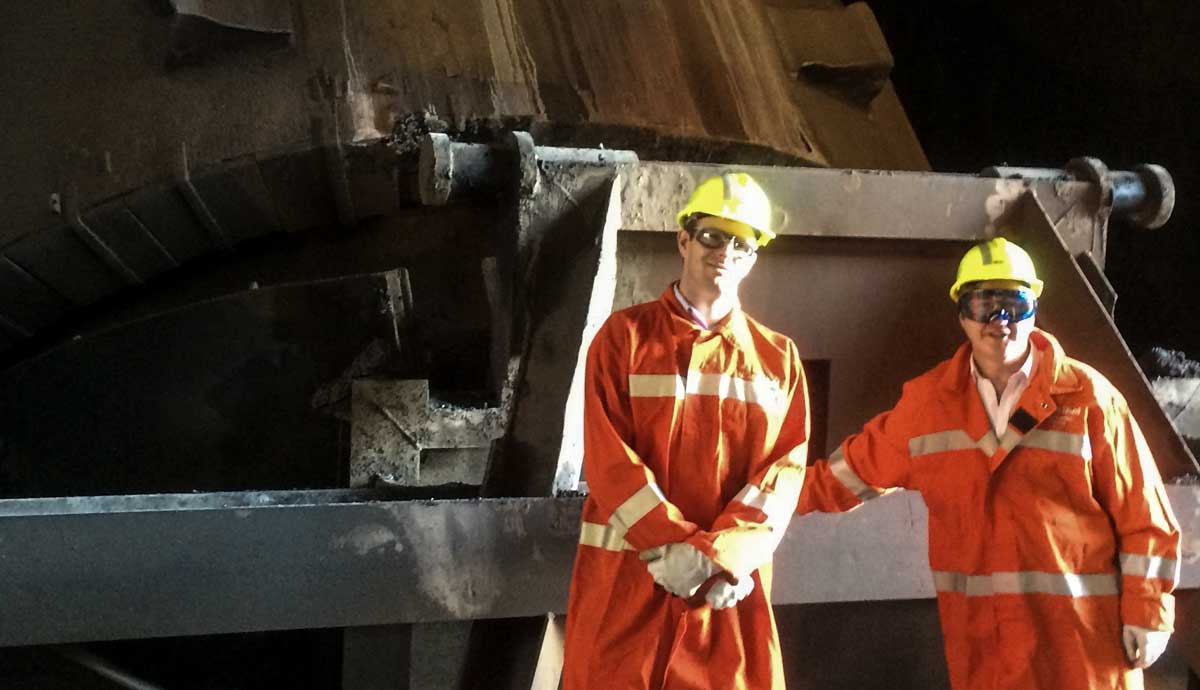February 27, 2017
Number crunching towards efficient steelmaking
New method helps predict impurities and reduce waste in process.
A University of Wollongong (UOW) PhD student has developed a model to better predict impurities in steelmaking, leading to reduced waste and faster processing.
Basic oxygen steelmaking is the mainstay of steel production at BlueScope’s Port Kembla steelworks.
Phillip Drain, a PhD student with UOW-led ARC Research Hub for Australian Steel Manufacturing (Steel Research Hub), trawled almost 10 years of data from BlueScope’s laboratories to refine their model’s ability to predict phosphorous content.
Iron ore contains phosphorous, and large quantities can cause steel to become brittle and less ductile, which is a key attribute in allowing it to be drawn and rolled into a variety of shapes to suit different uses.
Steelmaking is a batch process so any reduction in the time to make a batch of steel opens the opportunity to make more steel.
Steelmakers use various mathematical models to attempt to predict the final composition to avoid a production delay sampling the steel.
 Phillip Drain and Professor Brian Monaghan have toured steelmaking plants across Australia to investigate how research helps the industry remain globally competitive.
Phillip Drain and Professor Brian Monaghan have toured steelmaking plants across Australia to investigate how research helps the industry remain globally competitive.
A predictive model that can be used to accurately predict the phosphorous composition of the crude steel at the end of the steelmaking process would enable a reduction in the overall production cycle time as well as increased productivity of the existing plant.
Mr Drain’s refined model – developed under the guidance of Professor Brian Monaghan and BlueScope’s Dr Michael Chapman – has been implemented at the Port Kembla plant.
This improvement has led to a greater than 5 per cent improvement on the previous calculations used.
“The refinement of the model may seem small but it has a big impact,” Phillip said.
BlueScope have confirmed the potential impact to steelmaking at Port Kembla is an additional 8250 tonnes of steel produced each year.
The model can also be used to better understand raw material inputs. Iron ores from differing geographic locations as well as cheaper ores often contain higher amounts of phosphorous and titanium.
The model has the capability to reduce lost production and reduce costs through the use of cheaper ores.
The Steel Research Hub is a transformative initiative that has attracted $12.5 million in funding; from Industry, the ARC and Universities; for a five-year program to assist the development of sustainable solutions to ensure Australia has a competitive steel industry.
Bluescope’s Dr Michael Chapman said: “Primary steelmaking in this country is facing a number of challenges.
"In response to this, BlueScope have focused its research efforts in areas that can return an immediate improvement for its investment, while still providing a challenging and rewarding research environment.
“This is where the partnership with the Steel Research Hub, and particularly projects like Phillip's provides both.”
:format(jpg)/prod01/channel_3/assets/live-migration/www/images/content/groups/public/web/media/documents/mm/uow229131.jpg)